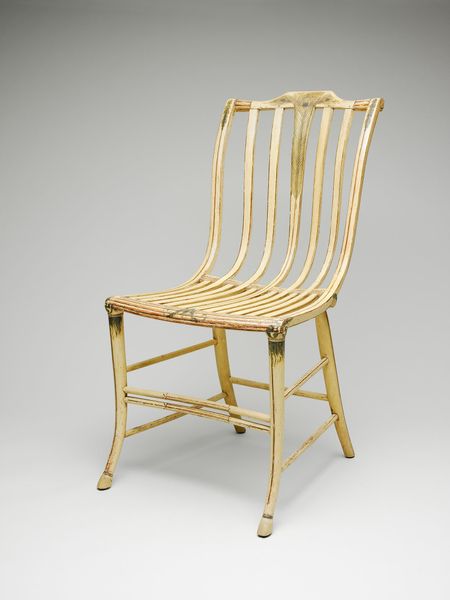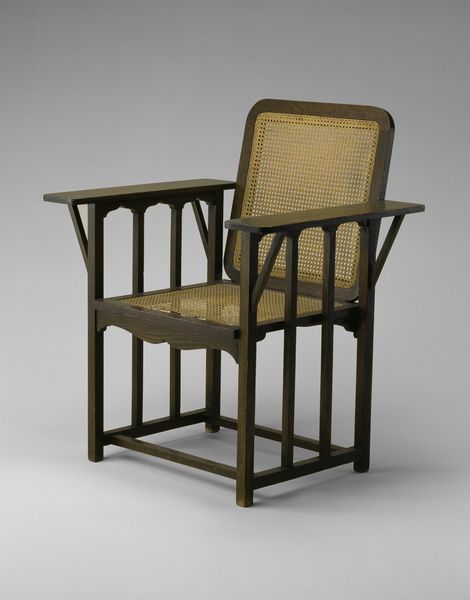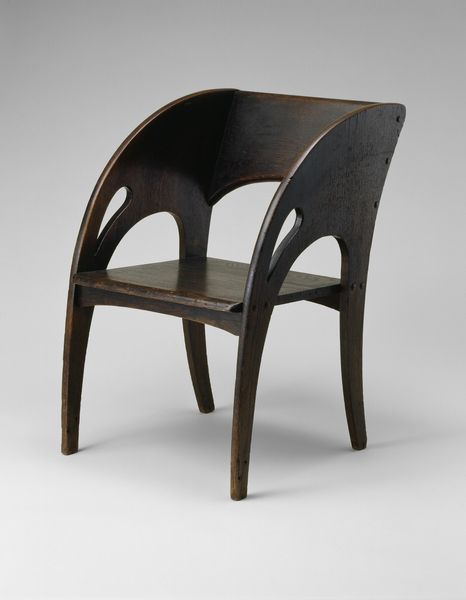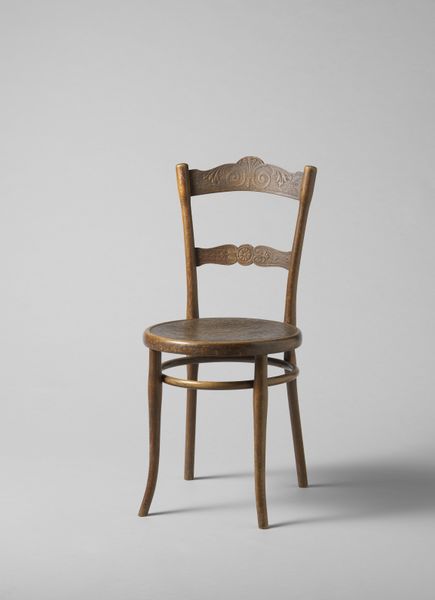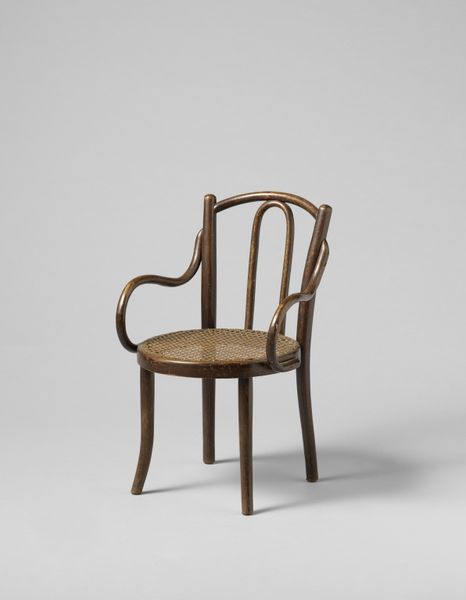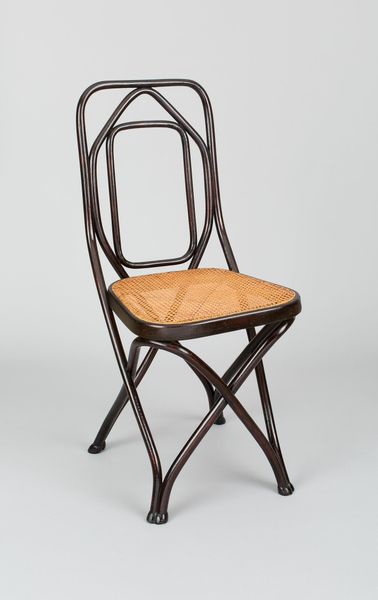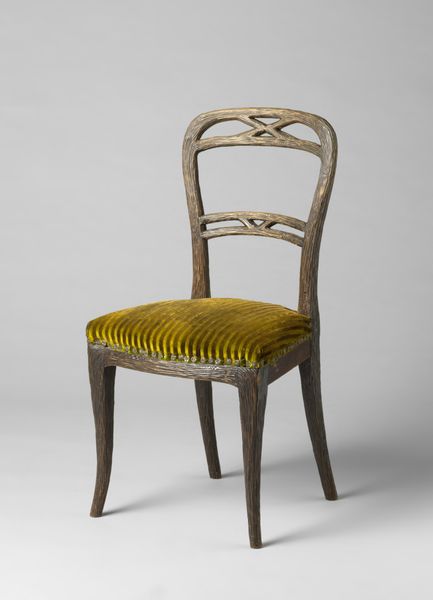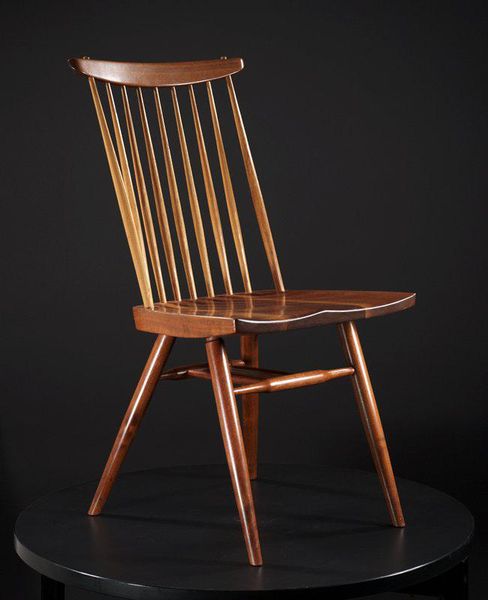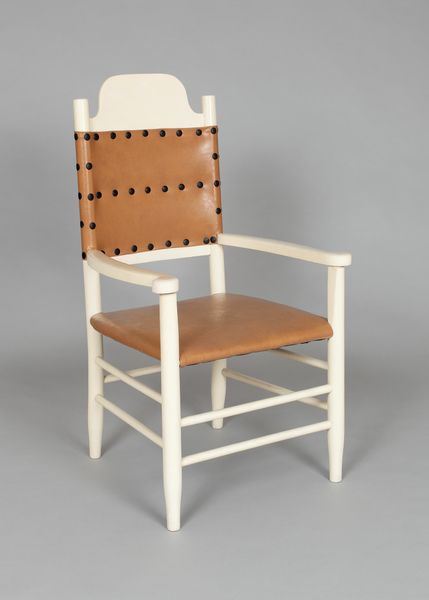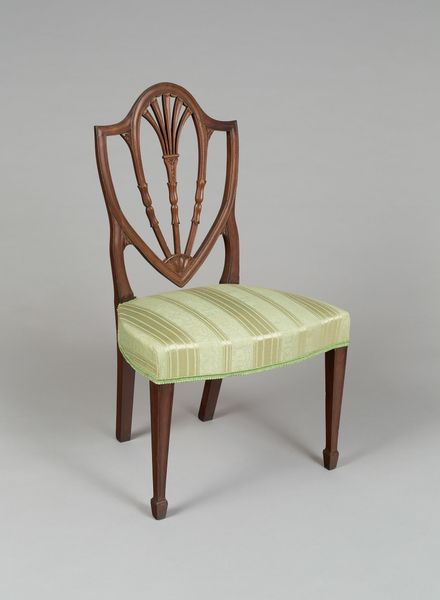
wood
#
neoclacissism
#
furniture
#
form
#
geometric
#
united-states
#
wood
#
decorative-art
Dimensions: 33 7/8 x 18 1/4 x 26 in. (86 x 46.4 x 66 cm)
Copyright: Public Domain
Editor: Here we have Samuel Gragg’s “Side Chair,” made around 1807-1810. It's currently residing here at the Met. The wood construction is fascinating, it feels so light and airy, almost defying the weight of wood. How do you interpret this piece, especially given its place in American design? Curator: It is remarkable, isn't it? Consider that chair as more than mere furniture; see it as a symbol, reflecting a moment of cultural transformation in early 19th century America. The neoclassical elements speak to a desire for order and reason, a visual echo of the Enlightenment ideals taking root. The peacock feather is not coincidental. Editor: A peacock feather? I missed that. It's on the top? Curator: Exactly! The peacock has forever symbolized beauty and royalty and immortality across diverse traditions. What then might Gragg suggest here? A nod to aristocracy but tempered perhaps, made uniquely American by its inventive form? Also consider its functionality – a chair invites repose, contemplation. How might that object become transformed when one considers sitting? Editor: That’s a clever way to frame it. So, it's not just about sitting, but about the *kind* of sitting, the kind of contemplation being invited. I guess I was so focused on the construction, I didn’t think about the symbolic weight. Curator: Indeed, and consider this innovation; the artist makes clear he's aware of historical symbolism, while also forging new, personal symbology and craftsmanship. The chair invites you, and what will you in turn leave? Editor: That’s a great point. I’ll never look at a chair the same way again. It has completely transformed how I appreciate even everyday design.
Comments
No comments
Be the first to comment and join the conversation on the ultimate creative platform.
